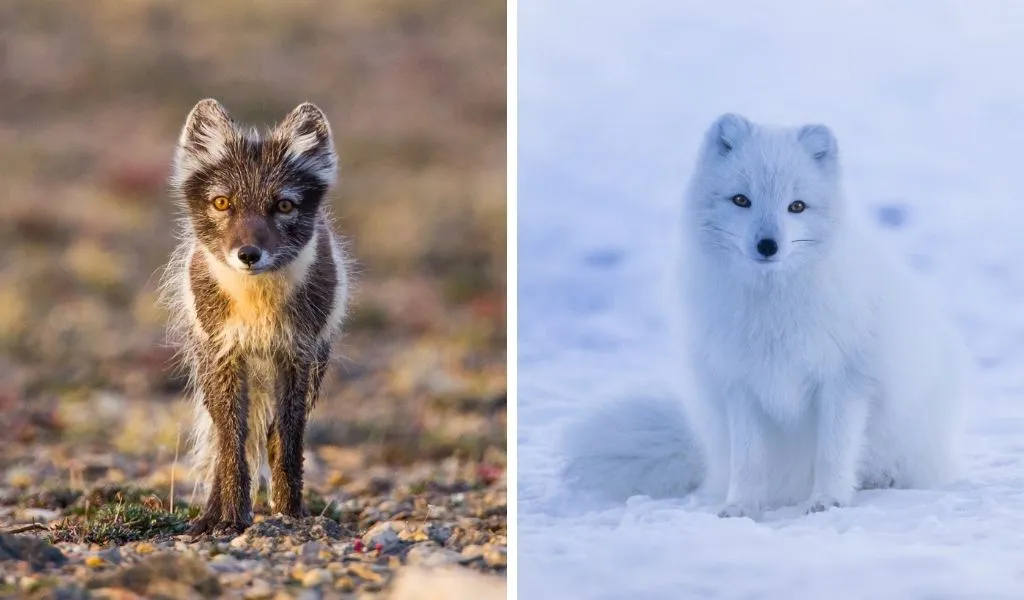Jillian Holbrook
AP Biology 🧬
358 resourcesSee Units
Natural Selection
Environmental conditions may play a role in which phenotypes are more prevalent for a species in an ecological community. This connects back to the concept of natural selection, where heritable variations lead to differential reproductive success. In other words, some individuals inherited traits or adaptations that raise their fitness—allowing them to survive and reproduce, thereby passing on their genes to offspring.
Remember that organisms have a genotype, an individual's genetic makeup, which is the specific combination of alleles (alternative versions/variants of a gene) for a particular trait. Offspring inherit their genotype as a combination of the alleles received from each parent. An individual's genotype is different from their phenotype, which is the physical expression of their genes, including the traits that they actually display.
Environmental Changes 🐁
A classic example of the selective pressure of environmental changes on phenotype is the coloration of certain mice species. In an environment that has been covered in permafrost for the past few thousand years, the majority of mice are light in color. This allows these mice to easily blend into the environment that they live in and, therefore, protects them from predators. They have a higher chance to survive and reproduce, making the light fur phenotype dominant over mice with black or dark brown fur.

Image courtesy of Giphy
However, due to global warming trends in the changing climate, the layer of permafrost begins to melt, and the dark volcanic soil underneath is exposed. Based on the change in the habitat of the mice, mice with light fur would become more susceptible to predation, as they are easier to spot! Now, the darker mice have a phenotypic advantage to blend into the environment, meaning they are better adapted to survive and reproduce more frequently. Thus, the environmental change causes a shift in the allele frequency to favor the trait of darker-colored fur.
Phenotypic Plasticity
Environmental factors can also influence the physical expression of genes, which results in the phenomenon of phenotypic plasticity. Phenotypic plasticity occurs when individuals with the same genotype exhibit different phenotypes in different environments. Therefore, an organism with phenotypic plasticity can change its physical traits or characteristics in response to changes in the environment. These changes include, but are not limited to, the organism's appearance, behavior, and physiology.
Why is phenotypic plasticity notable? Phenotypic plasticity allows organisms to exploit new or different ecological niches. More than that, it helps individuals adapt to variable environmental conditions.
Phenotypic plasticity can be influenced by both genetic and environmental factors. Some organisms are more genetically predisposed to exhibit plasticity than others, while environmental conditions can also play a significant role in determining the extent of plasticity that an organism exhibits.
Environmental Changes 🦊
The arctic fox uses phenotypic plasticity to adapt to living in the harsh and cold environments of the arctic tundra. During the winter months, the arctic fox has a thick, white coat that helps it to blend in with the snow and ice. This environmental camouflage helps arctic foxes avoid predators and hunt for prey, as they are less visible to hares and other small mammals that the arctic fox consumes. However, in the summer, the arctic fox's coat turns a brown or gray color, which helps it to blend in with the rocks and vegetation of the tundra.

Image Courtesy of Polar Guidebook
This change in coat color is an example of phenotypic plasticity, as it allows the arctic fox to adapt to the changing seasons and to better camouflage itself in different environments. The change in coat color is triggered by changes in daylight and regulated by the hormone melatonin.
Browse Study Guides By Unit
🧪Unit 1 – Chemistry of Life
🧬Unit 2 – Cell Structure & Function
🔋Unit 3 – Cellular Energetics
🦠Unit 4 – Cell Communication & Cell Cycle
👪Unit 5 – Heredity
👻Unit 6 – Gene Expression & Regulation
🦍Unit 7 – Natural Selection
🌲Unit 8 – Ecology
📚Study Tools
🧐Exam Skills

Fiveable
Resources
© 2025 Fiveable Inc. All rights reserved.